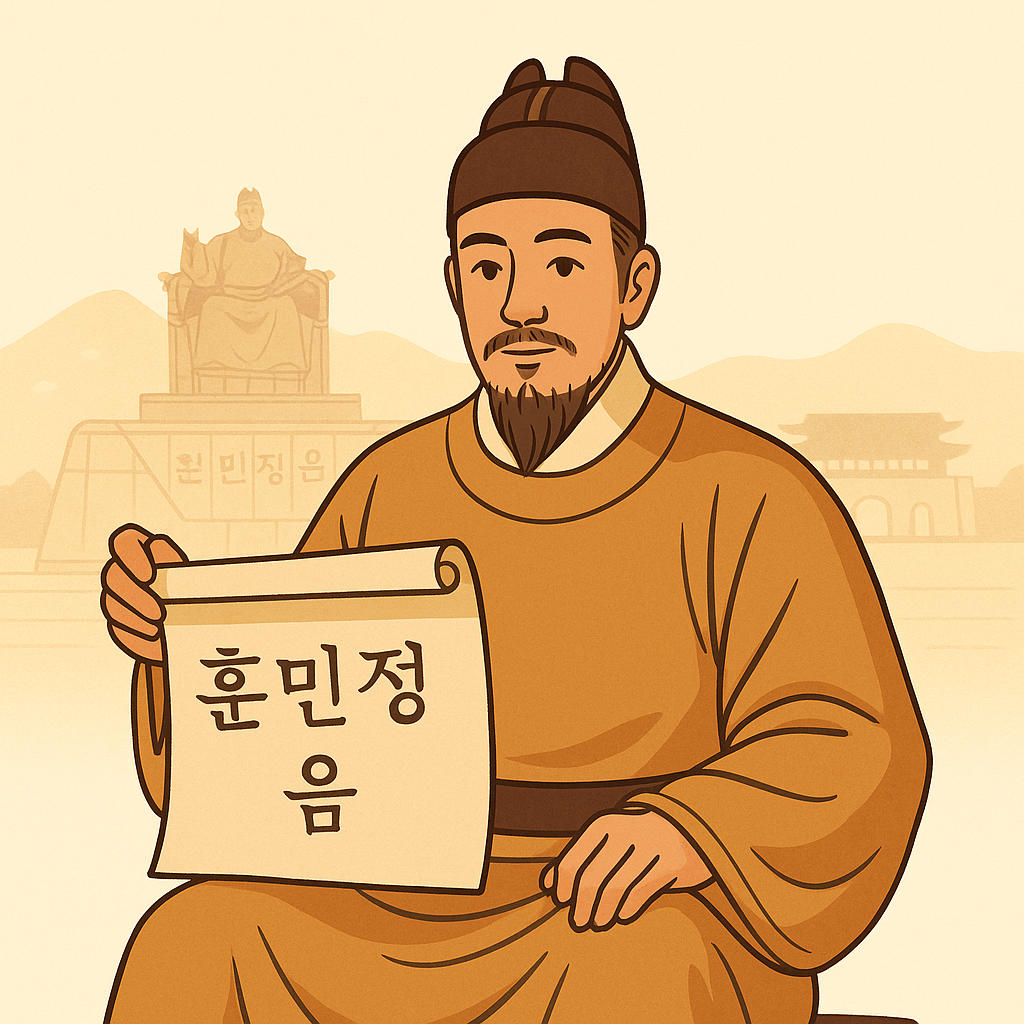For new learners, grasping The King Sejong Hangul Connection gives deeper meaning to each letter they study.
A Brief History of the Korean Alphabet
The Korean writing system, known as Hangul, is unique among world scripts. It didn’t gradually evolve, but rather it was intentionally created under the leadership of one man: King Sejong the Great.
This connection between King Sejong and Hangul is central to understanding not just Korean history, but also why the language is so accessible for modern learners.
Who Was King Sejong?
King Sejong ruled during the 15th century (1397–1450) and history shows, he was one of Korea’s most respected monarchs. His reign was marked by reforms in law, science, agriculture—and most famously, language.
Before Hangul, Korean writing relied on Classical Chinese characters, which were difficult for most commoners to learn, which meant literacy was largely limited to the elite.
Why Did King Sejong Create Hangul?
King Sejong believed that everyone—not just scholars—should be able to read and write. In 1443, he commissioned the creation of a phonetic alphabet that matched the sounds of spoken Korean. The result was Hunminjeongeum (“The Proper Sounds for the Instruction of the People”), which later became known simply as Hangul.
“A wise man can learn it in a morning; a fool can learn it in ten days.”
– Preface to Hunminjeongeum, 1446
What Makes Hangul So Unique?
- It’s phonetic because each character represents a sound, not a concept.
- It’s logical. The shapes of the letters are based on the position of the tongue and mouth.
- It’s efficient. You can learn to read basic Korean in a day or two.
This is why many people refer to Sejong Hangul as one of the most learner-friendly writing systems in the world.
Where Can You See The King Sejong Hangul Legacy Today?
- The King Sejong Hangul Statue in Gwanghwamun Square, Seoul, honors his achievements.
- Hangul Day is a national holiday in South Korea, celebrated every October 9th.
- Textbooks, schools, and universities often refer to The King Sejong Hangul Connection when teaching the alphabet.
- The historical K-Drama “Tree With Deep Roots” tells the story of how King Sejong fought to make Hangul the official alphabet of Korea, despite political resistance and threats to his rule.
🎯 Are You Over 50 or Struggling to Learn Korean?
If you’re over 50 or just finding Korean harder than you expected, you’re not alone.
Grab your free guide with our 100 KDrama words and phrases here:
We also offer free 1-on-1 strategy sessions for learners who want a clear, personal plan that actually works. Especially useful if traditional apps and videos haven’t helped.


Leave a Reply